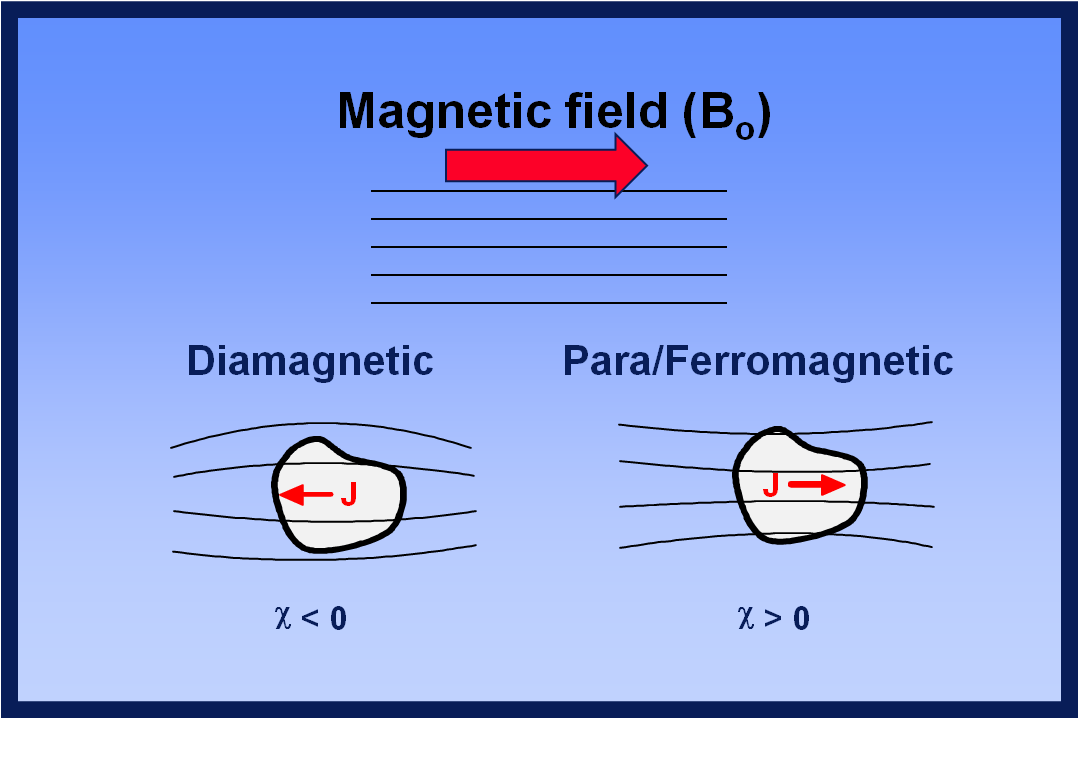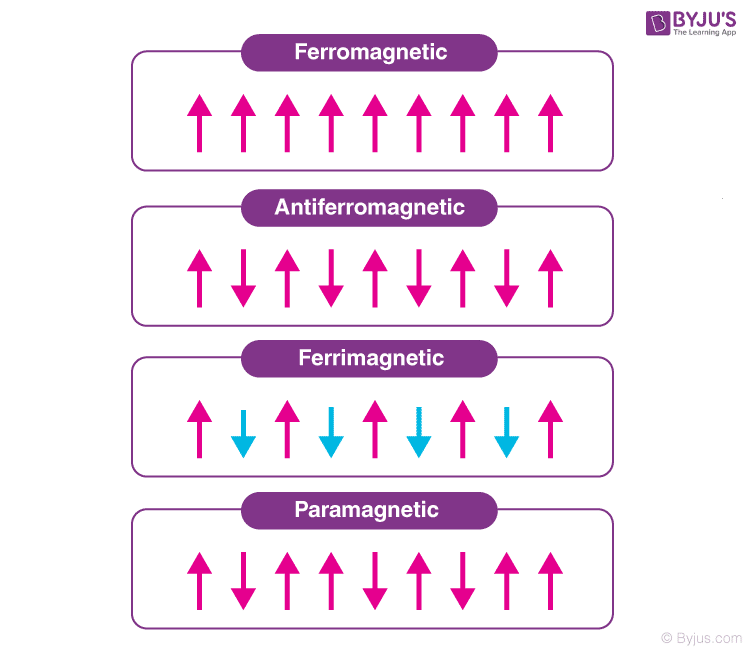
Distinguish between and substances Brainly.in
Understanding Magnetic Susceptibility. The classification of materials into Diamagnetic, Paramagnetic, and Ferromagnetic substances is based on their magnetic susceptibility. A material is considered Diamagnetic if its susceptibility value χ is small and negative, Paramagnetic if the value of χ is small and positive, and Ferromagnetic if the.

susceptibility (χ) Questions and Answers in MRI
paramagnetism, kind of magnetism characteristic of materials weakly attracted by a strong magnet, named and extensively investigated by the British scientist Michael Faraday beginning in 1845. Most elements and some compounds are paramagnetic. Strong paramagnetism (not to be confused with the ferromagnetism of the elements iron, cobalt, nickel, and other alloys) is exhibited by compounds.
Examples Online Discount Shop For Electronics, Apparel, Toys, Books, Games
Ferromagnetic, paramagnetic and diamagnetic are often used to describe the way in which materials behave when exposed to a magnetic field. What Is Ferromagnetic? Ferromagnetic materials exhibit a strong attraction towards magnets. They don't necessarily produce their own magnetic field; only magnets produce a magnetic field.

Outline How is manifested What are the
The main difference between diamagnetism, paramagnetism, and ferromagnetism is that diamagnetism refers to a type of magnetism which forms in opposition to an external magnetic field and disappears when the external field is removed ; paramagnetism refers to a type of magnetism that forms along the direction of an external magnetic field and dis.

vs vs
Now room-temperature ferromagnetism is demonstrated in a two-dimensional honeycomb self-assembly of confined molecules.. 2 powder show that they are diamagnetic and paramagnetic, respectively.

CBSE Class 12 Physics And Matter Notes & Important Questions Wisdom TechSavvy Academy
Paramagnetic, ferromagnetic, antiferromagnetic, and ferrimagnetic solids all have χ > 0, but the magnitude of their susceptibility varies with the kind of ordering and with temperature.. Diamagnetic compounds have a weak negative susceptibility (χ < 0). Definitions. H = applied magnetic field (units: Henry (H)) B = induced magnetic field.

Characteristics of and substances Overall Science
The term "ferromagnetism" comes from the word "ferrous," which is short for iron, the first metal known to exhibit magnetic field-attractive qualities. Some materials, including iron, cobalt, alloys, etc., exhibit ferromagnetism, a characteristic magnetic behavior. Magnets are attracted strongly to ferromagnetic materials.

Understanding the Different Properties of and Materials
When exposed to magnetic fields, diamagnetic materials are weakly repelled, paramagnetic materials are weakly attracted, and ferromagnetic materials exhibit considerable attraction and can continue to be magnetized even after the field has been removed. What is Diamagnetic Paramagnetic and Ferromagnetic:

1 versus particles in (A) the absence... Download Scientific
Materials may be classified as ferromagnetic, paramagnetic, or diamagnetic based on their response to an external magnetic field. Ferromagnetism is a large effect, often greater than that of the applied magnetic field, that persists even in the absence of an applied magnetic field.

If we put material under strong the opposing
Ferromagnetic substances are those substances that when it's placed in an external magnetic field, get strongly magnetized. Also, they tend to move from a region of weak to the region of a strong magnetic field and get strongly attracted to a magnet.

material What is material? YouTube
Paramagnetism, ferromagnetism and spin waves Constituent atoms or molecules of paramagnetic materials have permanent magnetic moments ( dipoles ), even in the absence of an applied field. The permanent moment generally is due to the spin of unpaired electrons in atomic or molecular electron orbitals (see Magnetic moment ).

characteristics of materials. Download Scientific Diagram
All materials, even paramagnetic substances, and ferromagnetic metals have some diamagnetic characteristics. Some electrons in these materials set up fields to cancel the intrusion of an outside field. Materials that have an uneven number of electrons are normally paramagnetic.

Definition, Materials, Applications, Video
Because all atoms possess electrons, all materials are diamagnetic to some degree. But if present, the stronger forces of paramagnetism or ferromagnetism will easily overshadow the diamagnetism. Here we see an example of a paramagnetic and diamagnetic material responding to a strong magnetic field.

How do i learn and (mainly need help with which one has unpaired
Ferromagnetic Substance Substances that get magnetized strongly in an external magnetic field in a direction which is the same as the direction of the externally applied field are known as ferromagnetic substances.

moment arrangments in (a) (b) (c)... Download Scientific
Let's find out experimentally what that is. Apply external field H (x axis) and measure total field B (y axis) in the ferromagnetic material. Start with value of H (H 0 ), decrease to 0, flip the direction and reach -H 0. The curve describing relationship between H and B is called hysteresis curve . When H=0, B.ne.0.
Allergic shot on kinds of gone crazy Distant Collecting leaves
When a diamagnetic substance is placed in an external magnetic field, the induced e.m.f. in each atom increases. As a result, the speed of electrons revolving in one direction increases and those revolving in opposite direction decreases. Thus the substance as a whole acquires a net magnetic moment in a direction opposite to the applied field.